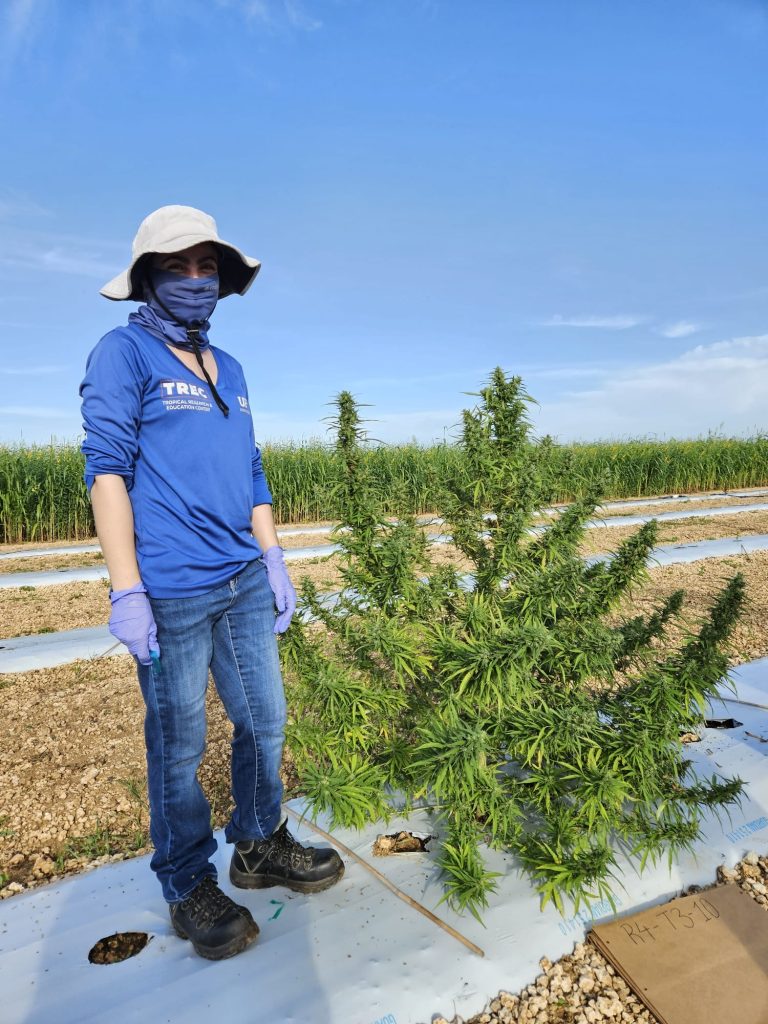by LOURDES MEDEROS, UF/IFAS
A new University of Florida study shows how drones can do more than just take aerial pictures and videos—they can help farmers grow better hemp by seeing the health of their crops with some artificial intelligence assistance.
Researchers at the UF Institute of Food and Agricultural Sciences (UF/IFAS) Tropical Research and Education Center (TREC) in Homestead used drone-based imaging to help determine how much nitrogen fertilizer hemp plants need for optimal growth and flower production.
Their findings could help growers optimize fertilizer use to save money and preserve the environment.
“Farmers are looking for ways to assess their crops throughout the year to make informed fertilizer decisions,” said Zack Brym, associate professor of agronomy at UF/IFAS TREC.
“We’ve shown that farmers with access to aerial images using red and near infrared (NIR) detection can spot differences in plant health by their color when scanning their fields,” he said.
This is crucial because timely and precise fertilizer applications can significantly impact hemp crop yield and quality, Brym said.
“Since nutrients move through the soil so fast in Florida, farmers are applying fertilizer multiple times each year. Technology like the use of drone imaging will help determine how much fertilizer might be needed mid-season, promoting more efficient use of resources and supporting sustainable farming practices,” he said.
A new University of Florida study shows how drones can do more than just take aerial pictures and videos—they can help farmers grow better hemp by seeing the health of their crops with some artificial intelligence assistance.
Researchers at the UF Institute of Food and Agricultural Sciences (UF/IFAS) Tropical Research and Education Center (TREC) in Homestead used drone-based imaging to help determine how much nitrogen fertilizer hemp plants need for optimal growth and flower production.
Their findings could help growers optimize fertilizer use to save money and preserve the environment.
“Farmers are looking for ways to assess their crops throughout the year to make informed fertilizer decisions,” said Zack Brym, associate professor of agronomy at UF/IFAS TREC.
“We’ve shown that farmers with access to aerial images using red and near infrared (NIR) detection can spot differences in plant health by their color when scanning their fields,” he said.
This is crucial because timely and precise fertilizer applications can significantly impact hemp crop yield and quality, Brym said.
“Since nutrients move through the soil so fast in Florida, farmers are applying fertilizer multiple times each year. Technology like the use of drone imaging will help determine how much fertilizer might be needed mid-season, promoting more efficient use of resources and supporting sustainable farming practices,” he said.
A new University of Florida study shows how drones can do more than just take aerial pictures and videos—they can help farmers grow better hemp by seeing the health of their crops with some artificial intelligence assistance.
Researchers at the UF Institute of Food and Agricultural Sciences (UF/IFAS) Tropical Research and Education Center (TREC) in Homestead used drone-based imaging to help determine how much nitrogen fertilizer hemp plants need for optimal growth and flower production.
Their findings could help growers optimize fertilizer use to save money and preserve the environment.
“Farmers are looking for ways to assess their crops throughout the year to make informed fertilizer decisions,” said Zack Brym, associate professor of agronomy at UF/IFAS TREC.
“We’ve shown that farmers with access to aerial images using red and near infrared (NIR) detection can spot differences in plant health by their color when scanning their fields,” he said.
This is crucial because timely and precise fertilizer applications can significantly impact hemp crop yield and quality, Brym said.
“Since nutrients move through the soil so fast in Florida, farmers are applying fertilizer multiple times each year. Technology like the use of drone imaging will help determine how much fertilizer might be needed mid-season, promoting more efficient use of resources and supporting sustainable farming practices,” he said.


— Provided by UF/IFAS

